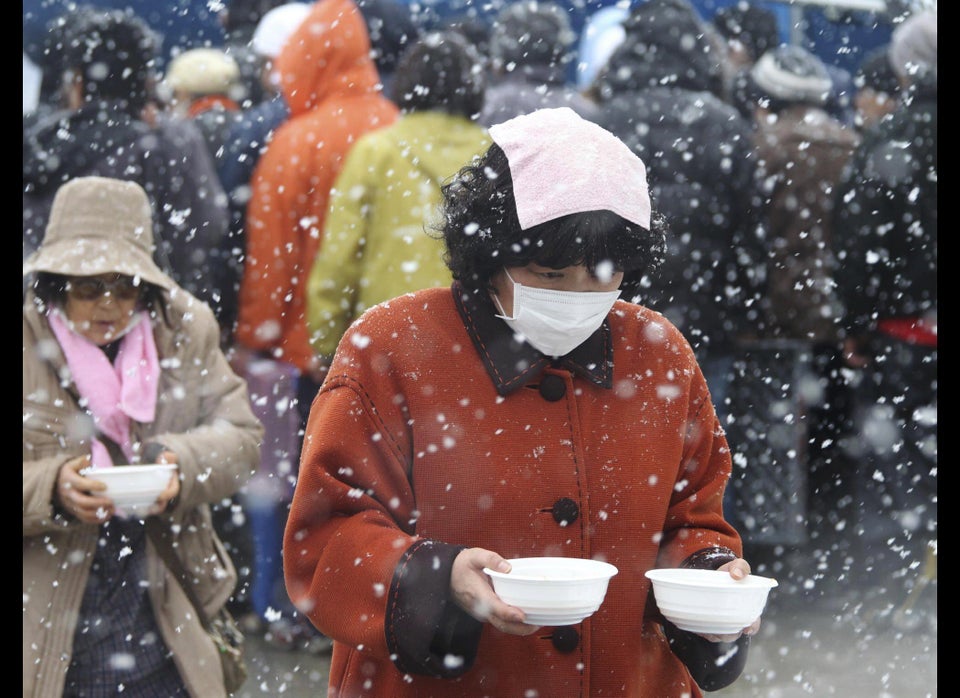
By Chris Meyers
OKUMA, Japan, Feb 13 (Reuters) - Back home for just three hours, a tearful Miyoko Takeda sorted through her belongings. She left behind the kimonos she once wore as a traditional dancer, fearful they might be contaminated by radiation.
Nearly a year has passed since a massive 9.0 magnitude earthquake hit Japan, Okuma town, but the site of the reactors at the centre of the Fukushima nuclear crisis remains off limits for residents, save for short trips to hastily abandoned homes.
The Fukushima Daiichi plant, on the coast 240 km (150 miles) northeast of Tokyo, was wrecked by the March 11 earthquake and tsunami, triggering reactor meltdowns and radiation leaks that caused mass evacuations and widespread contamination.
For the about 11,000 residents of Okuma, and the nearly 80,000 people across the prefecture who have been unable to return to their homes due to high radiation, the mental scars run deep even though many of their homes are physically intact.
Many do not know when, if ever, they can return to land that has been in their families for generations.
The 74-year-old Takeda, who visited her home with her husband at the weekend to remove cabinets, said that she has been unable to properly function ever since the evacuation last March.
"I can't sleep, I can't eat, I lost 8 kilogrammes and when I went to the doctor I threw up everything I took," she said, walking through her house, less than 10 km from the plant, in a white protective suit.
On her third trip back, Takeda fought back tears as she tried on her kimonos one last time before the three-hour window to return ended and they were once again forced out of the 20-km exclusion zone in which their home lies .
Okuma is the location of four reactors at the centre of the nuclear crisis, out of the crippled plant's total six reactors .
Over a thousand people from three towns, all within the exclusion zone, went back on Sunday to an area where weeds have taken over kindergarten schoolyards and manure from roaming cattle covers the roads.
QUILTS SPREAD OUT
In some cases, families left in such haste that their futon sleeping quilts were still spread out on the floor.
While some people, like Takeda, used their precious few hours to pick up belongings, others visited family graves and repaired the damage caused by the quake and its aftershocks.
With headstones overturned and weeds encroaching on ancient graves, 59-year-old Minoru Fukuo and his wife tidied up the area even though its only visitors now are passing wild animals.
"We just prayed that we want to come back soon, and clean up the grave properly. So we asked them (our ancestors) to wait until then," Fukuo said.
This is only the third time that residents have been allowed back into the nuclear exclusion zone since the disaster, and the first time that they have been allowed to visit graves.
Since the quake hit, the residents of Okuma have scattered across the country.
With no clear future, some are losing hope.
"If it's a normal disaster you recover from it, and you go forward a bit every day. But this time you don't," said Tomiko Ikinobu, 47. "All that's left is uncertainty."
The Japanese government declared the Daiichi nuclear plant to be in a state of "cold shutdown" late last year but the Environment Ministry has said about 2,400 square km (930 square miles) of land around the plant may need to be decontaminated -- an area roughly the size of Luxembourg.
Ikinobu, who lives with her four children in temporary housing, has been without a job since the disaster.
"Once a year goes by, everything has a year added to it, so getting a new job gets harder. My kids are getting bigger as well." (Editing by Elaine Lies and Jonathan Thatcher)

